When it comes to transforming your outdoor space, planting along your fence line can be a game-changer. Not only do fence line plants enhance privacy, but they also add natural beauty and vibrancy to your yard. Whether you’re looking to create a lush barrier, attract pollinators, or simply elevate your landscape design, the right plants can make all the difference.
The key is choosing the plants that suit your specific space and aesthetic. Some plants may thrive in full sun, while others are better suited for shaded areas. Some will need little maintenance, while others may reward you with vibrant blooms and a fragrant atmosphere.
Whatever your needs, the best plants for fence line landscaping offer something for every garden style.
Below, we explore 12 of the best plants for fence line landscaping that work for a variety of climates and preferences. From hardy evergreen shrubs to flowering vines, you’ll find a mix of low-maintenance options and showstoppers that will elevate the look of your fence while providing added benefits such as privacy, beauty, and habitat for wildlife.
1. Bamboo
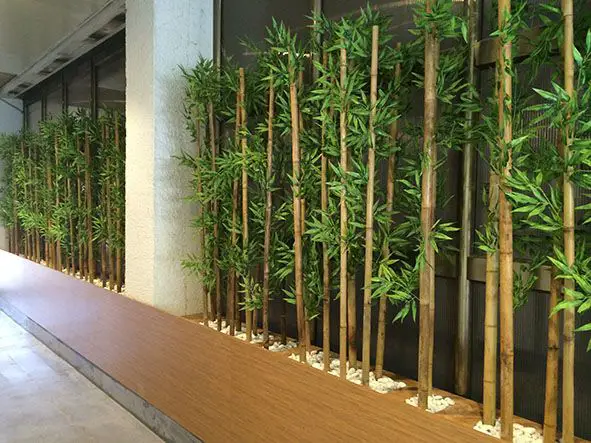
Bamboo is an excellent choice for creating a natural screen along your fence line. It grows quickly, offers fantastic privacy, and works well in many climates. Varieties like clumping bamboo are ideal for fence lines because they don’t spread invasively, unlike running bamboo.
This makes it a low-maintenance option for creating a green privacy barrier.
With its tall, dense vertical growth, bamboo not only breaks up the monotony of a plain fence but also reduces noise pollution—perfect if you live in a busy area or want to block out street sounds. Its lush greenery adds a tropical feel to your landscape, making it a stylish choice for both modern and traditional gardens.
Bamboo is versatile and can work in a variety of landscapes. Whether you’re designing a peaceful garden retreat or looking to define property boundaries, bamboo can provide the ideal solution. It’s also a great plant to pair with flowering shrubs or other greenery, creating layers of texture and color.
Care Tip: Bamboo thrives in well-drained, fertile soil and prefers full sun or partial shade. It’s low-maintenance once established, requiring occasional pruning to keep its shape and prevent overgrowth. For those seeking the best plants for fence line with a fast-growing, dramatic effect, bamboo should be a top contender on your list.
2. Clematis
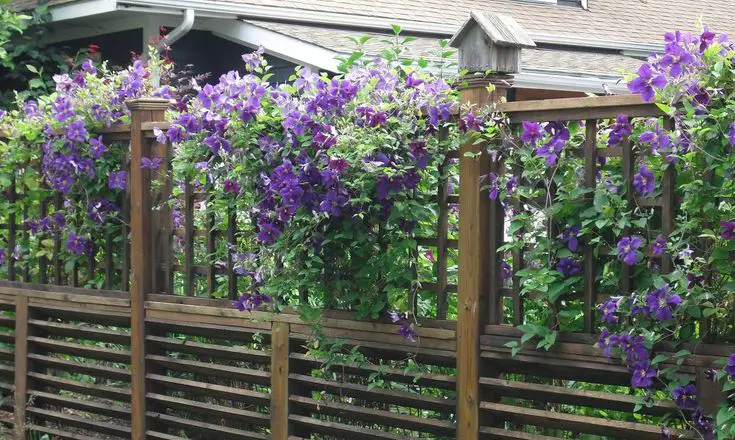
Looking for a burst of color? Clematis, known as the “queen of climbers,” is a flowering vine that’s perfect for a trellis or wooden fence. Available in stunning shades of purple, pink, white, and more, clematis adds softness and elegance to any fence line.
Whether you want vibrant blooms in the spring or delicate flowers throughout the summer, clematis provides a showstopper effect that draws attention and compliments.
The beauty of clematis lies in its versatility. It’s an excellent choice for both traditional and modern garden styles, and it thrives when given the support of a fence to climb. The cascading flowers, combined with the vine’s lush greenery, offer both visual interest and a feeling of depth along your fence line.
If you’re looking to attract pollinators, clematis is a perfect option. Its fragrant flowers will draw bees and butterflies, making it an ideal addition to any garden looking to boost its ecological value. Clematis can also provide the perfect backdrop to other flowering plants, helping to create a stunning layered effect along your fence.
Care Tip: Ensure your clematis has plenty of sunlight on its top leaves while keeping its roots shaded. A thick layer of mulch can help protect its roots and retain moisture, providing the right conditions for healthy growth. For those in search of the best plants for fence line that combine beauty and functionality, clematis should definitely be on your list.
3. Boxwood

For gardeners craving a formal, polished look, boxwood is a classic option. These evergreen shrubs are perfect for planting along a fence line to create a clean, structured aesthetic that lasts year-round.
With their dense, compact growth, boxwoods provide a uniform appearance and can easily be shaped into neat hedges, making them ideal for formal gardens or traditional landscapes.
Boxwoods are incredibly versatile and can be used in both low-maintenance designs or sculpted into intricate topiary. Their ability to stay green and vibrant throughout all seasons ensures that your fence line maintains structure and color, even in the winter months.
Whether planted alone for a minimalist design or mixed with other plants for added texture, boxwood creates a timeless, elegant look.
Additionally, boxwood’s dense foliage serves as a great natural barrier for privacy, making it a solid choice for those seeking a more refined way to block views. If you want a versatile, low-maintenance option to line your fence, boxwood is an excellent choice for creating a sophisticated atmosphere.
Care Tip: Boxwoods perform well in partially shady areas and benefit from well-drained soil. Regular pruning is necessary to maintain their shape, especially if you’re aiming for a more formal hedge or compact look. For a polished, year-round appearance, boxwood is one of the best plants for fence line.
4. Climbing Roses
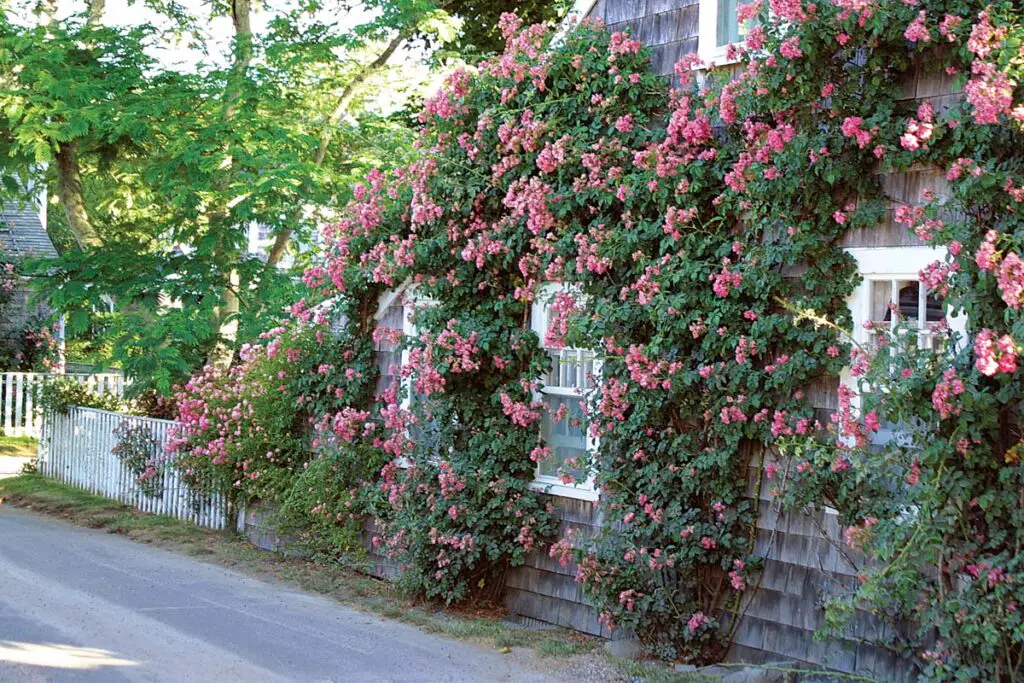
Bring timeless beauty and romance to your fence with climbing roses. Combining delicate blooms with a sweet fragrance, these plants will make your outdoor space even more inviting. Climbing roses create a dramatic, vertical display, transforming a simple fence into a stunning focal point.
Popular varieties such as ‘Eden’ and ‘New Dawn’ offer prolific blooms in a range of colors, from soft pinks to vibrant reds, and are relatively easy to care for, making them perfect for gardeners of all experience levels.
In addition to their beauty, climbing roses attract pollinators like bees and butterflies, adding ecological value to your garden. They can also be paired with other climbing plants or shrubs for a layered, colorful fence line that changes with the seasons.
Their fragrant flowers, often blooming in waves, add charm and romance to any landscape, ideal for creating a dreamy outdoor retreat.
Whether you’re looking to cover a large portion of your fence or simply want to accent certain areas, climbing roses provide a lush, vibrant option that thrives in full sun.
Care Tip: Roses need at least six hours of sunlight daily and prefer slightly acidic, well-draining soil. Be sure to use a sturdy fence or trellis for support, as their growth can become quite expansive. For a combination of beauty, fragrance, and charm, climbing roses are among the best plants for fence line.
5. Lavender
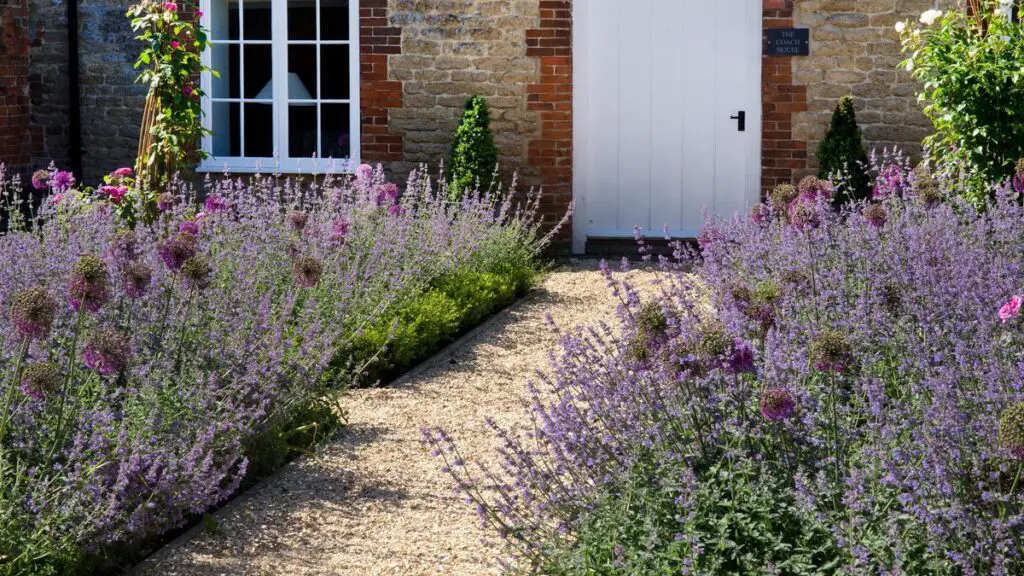
If you’re looking to create a calming, fragrant fence line, lavender is an ideal choice. With its beautiful purple-blue spikes and soothing aroma, lavender adds both color and a pleasant scent to your garden. The plant’s soft, silvery-green foliage serves as a perfect contrast to its vibrant flowers, creating an eye-catching border along your fence.
Lavender’s fragrance also adds a sensory experience to your outdoor space, making it a relaxing spot to unwind.
Beyond its beauty and fragrance, lavender is a magnet for pollinators, particularly bees and butterflies. This makes it an excellent choice if you’re looking to support local wildlife while enhancing the natural beauty of your fence line.
Lavender also works wonderfully when paired with other drought-tolerant plants, helping to create a low-maintenance yet striking landscape.
Lavender’s hardy nature and stunning color make it a standout choice for anyone seeking a serene, fragrant atmosphere in their garden. It’s perfect for creating a peaceful oasis along your fence, offering both aesthetic appeal and ecological benefits.
Care Tip: Lavender thrives in full sun and well-drained soil. It prefers dry conditions, so avoid overwatering, which can lead to root rot. For those searching for the best plants for fence line that add both beauty and fragrance, lavender is a must-have.
Related Topics:
6. Holly
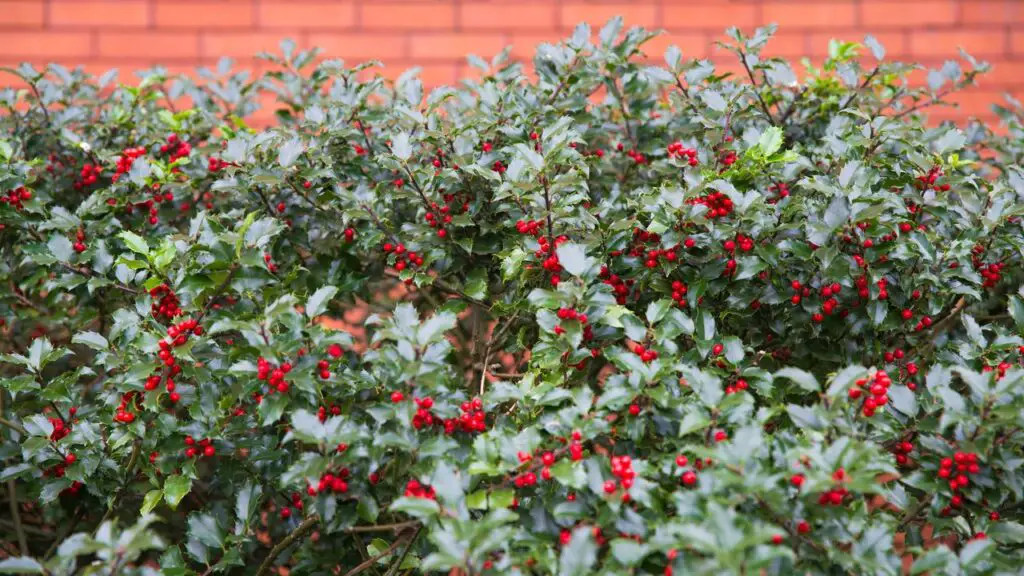
Holly bushes make an excellent, low-maintenance addition to any fence line. Known for their glossy green leaves and vibrant red berries, holly provides year-round interest and adds a festive touch to your garden during the holiday season.
Its dense, evergreen foliage also makes it a perfect choice for creating a natural privacy screen along your fence, blocking out unwanted views and noise while maintaining a structured appearance.
Whether planted alone or in a row, holly bushes provide a solid barrier that enhances your landscape with both texture and color. Their striking berries not only look beautiful but also attract wildlife, providing a food source for birds in the winter months.
Holly’s rich green leaves provide a strong contrast to the surrounding plants, helping to add visual depth to your fence line.
For a more layered design, holly pairs well with flowering plants or other evergreens, offering contrast and balance.
Care Tip: Holly thrives in full sun to partial shade and requires minimal watering once established. To produce berries, it’s essential to plant both male and female varieties. If you’re looking for one of the best plants for fence line that combines privacy, beauty, and minimal care, holly is a fantastic option.
7. Honeysuckle
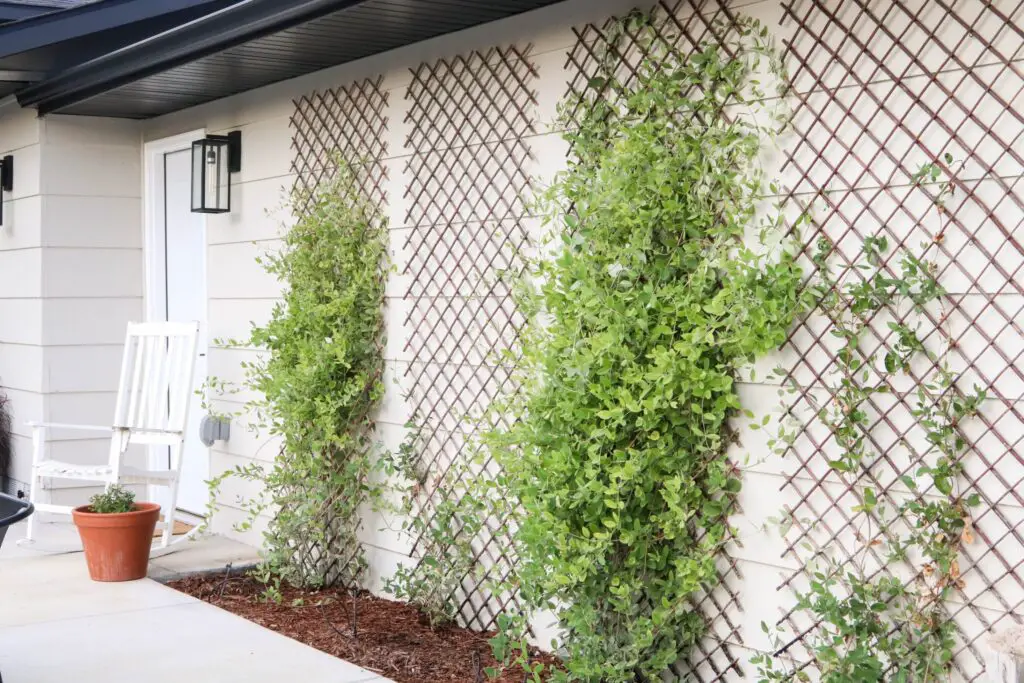
For a fast-growing, fragrant option, honeysuckle is hard to beat. This climbing plant features clusters of tubular flowers in vibrant hues of yellow, pink, and red, adding a burst of color to your fence line. Honeysuckle’s sweet scent fills the air, creating a delightful atmosphere in your garden.
Its fast-growing nature makes it an ideal choice for covering fences quickly, providing a lush and attractive backdrop.
Honeysuckle isn’t just beautiful—it’s also a magnet for wildlife. The flowers attract hummingbirds, bees, and butterflies, making it an excellent addition to any pollinator-friendly garden.
Its dense foliage and vibrant blooms can add both beauty and ecological value to your outdoor space, making it a great choice for those looking to support local wildlife while enhancing the visual appeal of their fence line.
Whether you’re seeking a charming plant to climb along a trellis or want to train it directly along your fence, honeysuckle brings both function and beauty to any garden.
Care Tip: Honeysuckle prefers full sun to partial shade and benefits from regular watering during dry spells. Be sure to support it with a trellis or allow it to climb directly along your fence. For a fast-growing, fragrant addition to your garden, honeysuckle is one of the best plants for fence line.
8. Arborvitae

Known for their towering height and evergreen qualities, arborvitae is a popular choice for creating a green privacy screen along fence lines. These majestic trees grow tall and dense, offering excellent coverage and windbreak capabilities.
With their rich green foliage, arborvitae provide a year-round barrier that blocks out noise, protects your garden from wind, and enhances your outdoor space with a natural, structured look.
Arborvitae is perfect for those seeking both privacy and beauty, as its sleek, conical shape adds an elegant, formal touch to any landscape. Whether planted in a row for a continuous hedge or as individual specimens for added height, arborvitae can serve as a stunning backdrop for lower-growing plants.
They also do well in a variety of climates, making them a reliable option for gardeners seeking a low-maintenance, long-lasting solution for their fence line.
Care Tip: Arborvitae require full sun to thrive and grow best in moderately moist, well-drained soil. Regular pruning can help maintain their vertical growth and shape, ensuring they stay neat and healthy. For a tall, evergreen privacy screen, arborvitae is one of the best plants for fence line.
9. Japanese Maple
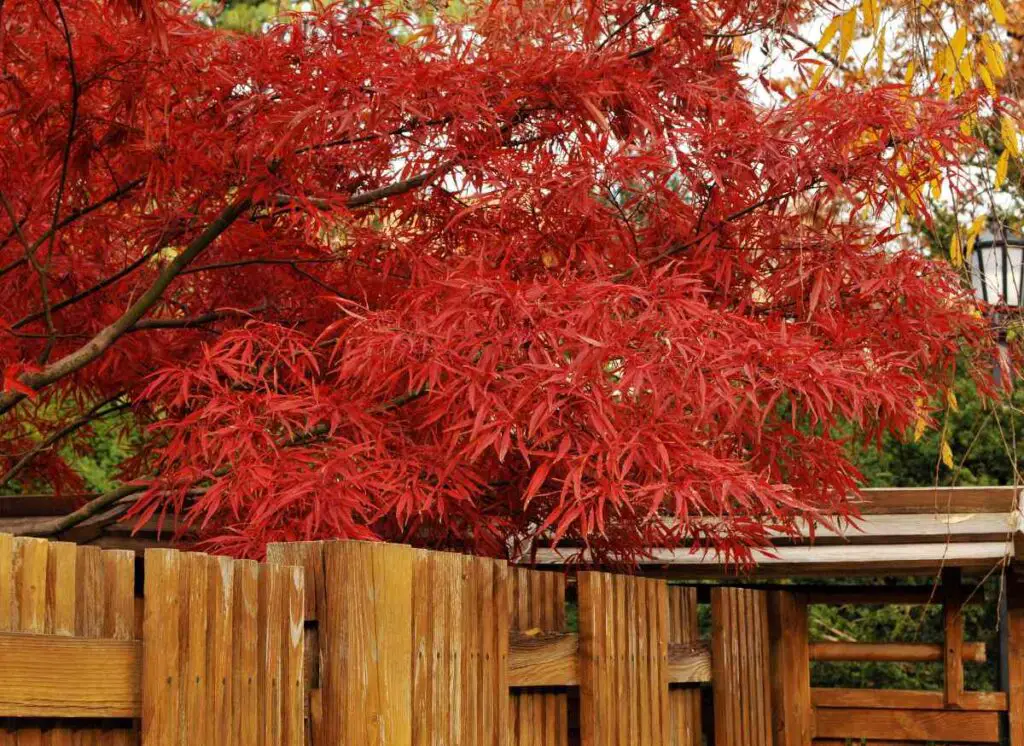
If elegance and color are what you desire, look no further than the Japanese maple. Known for their stunning foliage, these trees come in a variety of colors—from vibrant reds and oranges to deep purples—adding a striking visual element to any fence line.
The graceful, cascading growth habits of many Japanese maple varieties create a soft, flowing appearance that contrasts beautifully with the more structured elements of your garden, making them perfect for adding depth and sophistication.
Japanese maples are ideal for smaller garden spaces or as a focal point along a fence. Their unique leaves, which change color with the seasons, offer year-round visual interest, making them a true standout.
Whether you prefer the more traditional upright varieties or the elegant weeping types, Japanese maples can be adapted to suit many garden designs.
For those looking to add a touch of tranquility and elegance, Japanese maples provide the perfect solution, offering beauty in every season.
Care Tip: Japanese maples prefer partial shade and well-drained soil. They should be protected from harsh winds, as their delicate leaves are susceptible to damage. For a refined, colorful addition to your fence line, the Japanese maple is certainly one of the best plants for fence line.
10. Fuchsia
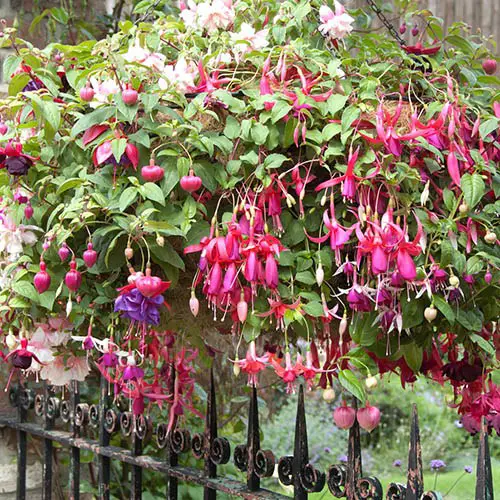
Want to add some color and whimsy to your fence line? Fuchsia plants are an excellent choice. These charming plants produce dangling, bell-shaped flowers in striking combinations of pink, purple, and white, creating a colorful and lively display.
Fuchsia’s delicate blooms make them an ideal option for adding a touch of whimsy and visual interest to your garden, especially in temperate climates where they thrive.
Fuchsia’s trailing habit makes it perfect for hanging baskets or allowing to cascade over the sides of a fence, creating a soft, romantic look. Its vibrant flowers attract hummingbirds, adding both beauty and ecological value to your outdoor space.
Fuchsia works well in a variety of garden styles, from cottage gardens to more contemporary landscapes, offering a playful yet elegant accent along your fence.
Care Tip: Fuchsia grows best in rich, moist soil under partial shade. To encourage fresh blooms, prune old stems in the spring. If you’re looking for one of the best plants for fence line that adds a pop of color and a whimsical touch, fuchsia is a wonderful choice.
11. Ivy
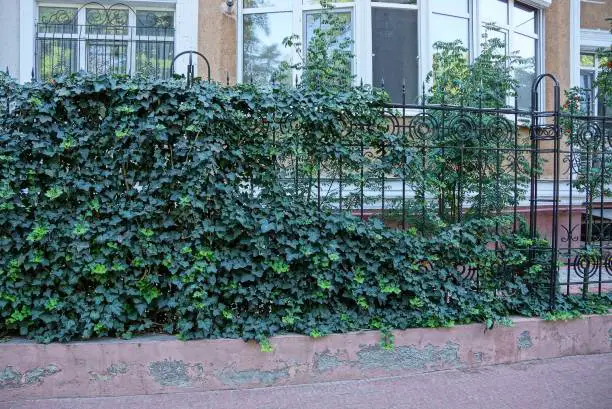
English ivy is a tried-and-true choice for creating a lush, green fence line. This fast-growing climber is perfect for covering large sections of fencing, instantly transforming your space into a vibrant, green oasis. Its dense, evergreen foliage adds texture and a sense of mystery, making it a popular option for those seeking a classic, timeless look.
Whether draping over a wooden fence or climbing a trellis, ivy can quickly create a natural, almost enchanting backdrop.
Ivy’s versatility makes it suitable for a range of garden styles, from cottage gardens to more formal landscapes. Its ability to thrive in both sun and shade allows it to be planted in various spots along your fence line, and its growth can be trained to follow your desired pattern.
While ivy can provide excellent coverage, it also acts as a natural insulation barrier, helping to moderate temperature and reduce noise.
Care Tip: Ivy thrives in various conditions, from sun to shade, but be mindful of its fast-growing tendencies. Regular pruning is necessary to keep it in check and prevent it from becoming invasive. For a lush, green, and low-maintenance option, ivy is one of the best plants for fence line.
12. Hydrangeas
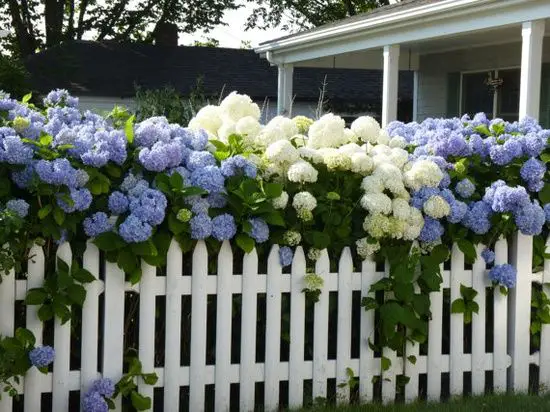
For those who want a show-stopping floral display, hydrangeas are a fantastic choice. These versatile shrubs produce large, colorful blooms in a variety of hues, ranging from white to shades of blue, pink, and even purple.
Whether you’re looking to brighten up a dull fence or add a burst of color to your garden, hydrangeas offer a breathtaking feature along your fence line. Their impressive blossoms are perfect for creating a dramatic, eye-catching focal point in your outdoor space.
Hydrangeas are known for their ability to thrive in partial shade, making them perfect for planting along fences that don’t receive full sunlight. The vibrant colors of their blooms can be influenced by soil pH, allowing you to customize the look of your fence line by adjusting the soil’s acidity.
Their large flower clusters attract pollinators such as bees and butterflies, adding to the ecological charm of your garden.
Care Tip: Hydrangeas prefer ample moisture and thrive in partial shade. Acidic soil will turn their blooms blue, while alkaline soil results in pink blooms. To keep them looking their best, water them regularly and prune them after flowering. For a stunning, colorful addition to your fence line, hydrangeas are undoubtedly among the best plants for fence line.
Choosing the best plants for fence line can truly transform your outdoor space, adding beauty, privacy, and a unique character to your garden. Whether you’re looking to create a lush, green barrier, introduce vibrant blooms, or attract pollinators, there’s a plant on this list to suit every need and garden style.
From the elegance of climbing roses and Japanese maples to the year-round coverage of arborvitae and holly, these plants offer a range of aesthetic and functional benefits.
By carefully selecting the right plants for your fence line, you can enhance your garden’s overall appeal while also achieving privacy and environmental benefits.
Whether you prefer low-maintenance shrubs, fragrant flowers, or colorful climbers, the best plants for fence line will elevate your landscape design and create a space that is both beautiful and functional for years to come.
FAQs:
1. What is the best plant for creating a privacy screen along my fence?
If you’re looking for a plant that provides maximum privacy, Bamboo and Arborvitae are excellent choices. Bamboo grows quickly and densely, creating a natural screen, while Arborvitae offers evergreen coverage and works well for tall, green privacy fences. Both plants can block out views and reduce noise effectively.
2. How do I maintain the plants on my fence line?
Maintenance depends on the plant type. For climbing plants like Clematis and Honeysuckle, it’s essential to provide a sturdy trellis or structure for support. Regular pruning is important for plants like Boxwood, Hydrangea, and Climbing Roses to encourage healthy growth and blooming.
Keep an eye out for pests such as aphids or mildew, especially with flowering plants like Roses and Fuchsia, and prune dead or diseased stems.
3. Which plants work best for attracting pollinators along my fence line?
Plants like Lavender, Honeysuckle, Clematis, and Fuchsia are excellent choices for attracting pollinators such as bees, butterflies, and hummingbirds. Their fragrant flowers and vibrant colors create a welcoming environment for these beneficial insects, adding both beauty and ecological value to your garden.

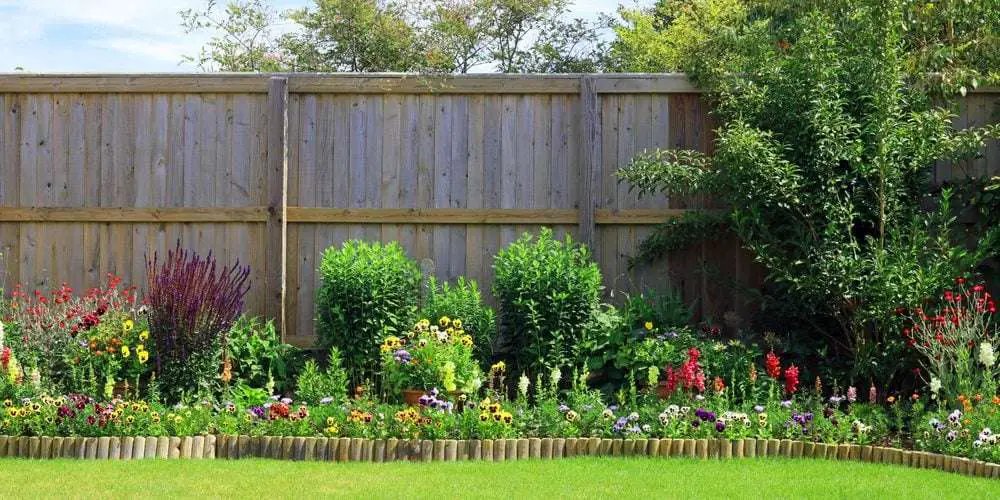
2 thoughts on “12 Best Plants For Fence Line: Add Beauty And Privacy!”